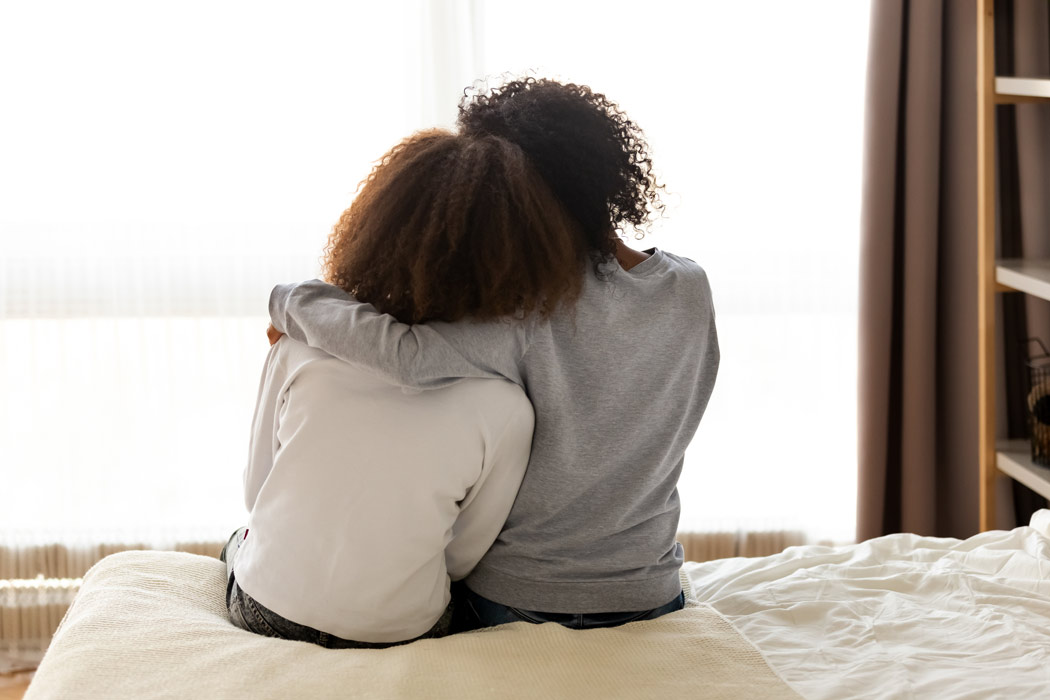Strategies to Help children Deal With Violence
 Here we are again. Devastated. Despaired. Saddened. Confused. Anxious. Overwhelmed. Outraged.
Here we are again. Devastated. Despaired. Saddened. Confused. Anxious. Overwhelmed. Outraged.
The range of emotions that we are experiencing as parents, caregivers, educators, and adults who play a critical role in the lives of children and young adults can be extremely difficult to navigate, especially considering the constant barrage of heartbreaking acts of hate, violence, and discrimination that we find ourselves trying to make sense of – for ourselves, and with our loved ones.
We know the realities of violence, and each of us bears witness to violence differently given our own life experiences. With the backdrop of the pandemic, the growing national epidemic of hate crimes, the most recent mass shootings and school massacres, it is undeniable that children in the U.S. are exposed to violence at alarming rates. Results from a nationally representative sample of U.S. children showed that over 60% of the 4,000 children surveyed experienced at least 1 form of direct violence in the study year. When direct and indirect experiences of violence were combined, the exposure rate went up to nearly 68%
As parents and caregivers, we can help buffer our children from the negative effects of direct or indirect violence experiences and exposure. Whether children experience, witness, or learn about mass shootings, police brutality, and violence at home or in the community, there are trusted strategies for parents to use that help our children understand what has happened and deal with any difficult emotions they may experience as a result of it.
We know this list of recommendations won’t solve everything or answer all of your questions, but taking care of yourself and your children is a pre-requisite.
- Put your own oxygen mask on first. It’s important not to rush on after incidents of violence. As parents and caregivers, we will have our own reactions in the aftermath of a violent event. We may push our own feelings down, or we may be outwardly feeling terror and rage. No matter how you experience and process the news of what your child witnessed, the more you can center and ground yourself, the better for your child. While it’s totally okay and important to show your child that you have feelings too, children of all ages, especially the younger ones, will take their “feeling cues” from the adults around them.
- Comfort and reassure your child. Hug your young person and let them know that you are here for them. Remind them that if they need anything, you can and will help them.
- Talk to your children (and other children in your life). Some parents are hesitant to talk to their children for different reasons. You may think they are too young or too sensitive, or that it just doesn’t align with your values. Many experts agree that we need to make some space for children to process (either through talk or play) about traumatic events. You can just ask them how they are feeling versus what they saw and heard. Aim to learn their experience and perspective, along with any questions they might have about what they have seen or heard. They may recount the events and details to you whether you ask them to or not. Listen to your child and seek to understand how your child is making meaning of their experience. Don’t force them to talk if they don’t want to. Sometimes children don’t want to talk for a variety of reasons, and that’s okay too. You can come back at a later time to check in and explore how they are doing.
- Be clear and direct when talking to children about death. Many of us have a difficult time talking about death, never mind talking to children about violent deaths. Let your values and cultural and religious beliefs be your guide. There is no magical way to take away your child’s pain, but you can help them cope. It is important to be clear with children that the person has died and not to use metaphors like saying the person has gone to sleep, which can provoke more confusion and fear for children, especially at nap and bedtime. All of the guidance in this document applies when children witness violent deaths or hear about people being murdered in their community. Children will grieve differently based on many factors, including their relationship with the deceased person.
- Validate their reactions. Witnessing violence, whether it’s once or chronically, is upsetting and can cause different reactions that can change or seem contradictory over time. What one child feels about their experience, or how they behave, may not be what you expect and might be very different from their siblings’ or your own feelings and responses. Be open to however they present their feelings, attitudes, and responses. Normalize your child’s feelings of fear, anger, worry, or sadness. Let them know there is no right way to feel. If their explanation of the event seems off or incorrect, let them know that, while their feelings are justified, there may be other ways of thinking about what happened.
- Pay attention to non-verbal cues and behaviors. Beyond words, children let us know how they are doing through their behaviors. Pay close attention to your children to see if they are behaving differently than normal. For babies and toddlers, excessive crying and tantrums and changes in sleeping and eating patterns can signal that something isn’t right. Older children may also exhibit changes in behavior, experience nightmares, or try unhealthy coping strategies to help them get through their pain. If you notice something, don’t judge your child’s behaviors. Instead, gently point out the behaviors you are seeing and let your child know that it may be connected to what they experienced. Remind them that you are always there to talk. Tell them you want to help them be safe. If things worsen, you can talk to your pediatrician, faith leader or other trusted community leader about where to get more help. Online resources are also widely available.
- You may not be able to answer all of your child’s questions. That’s okay. If you need to find the answer to your child’s question, let them know that you don’t know but will find out. Sometimes the answer your child is seeking is not knowable or explainable. In these circumstances, let them know that sometimes we are left not really knowing all the answers that we desire.
- Practice mindfulness with your children. Mindfulness is an ancient cultural and religious tradition rooted in Hinduism and Buddhism that is now widely used across multiple contexts as a science-backed strategy for emotional regulation. Mindfulness helps us notice and be more aware of our bodies’ sensations, our feelings, and our thinking. In the moment, it can help us and our children slow and calm down. Over time, we can learn to recognize how we are doing more quickly and respond to what we need to be okay. Check out this website for ideas.
- Check in with your children over time. The psychological impacts of violence can sometimes be lasting for children, even if they witnessed a one-time event. Witnessing traumatic events affects children differently based on factors such as the child’s age, who is committing the violence, the child’s individual temperament, how close they were to the actual act of violence, how often they witness violence, and any experiences of or exposure to other types of trauma and adversities.
“Rinse and repeat” the strategies above when you check in with your child. The good news is that children are stronger than we may think, and with time and loving, supportive adults around them, they will feel better and be stronger.
Click here to download the printable version of this page: CLICK HERE


